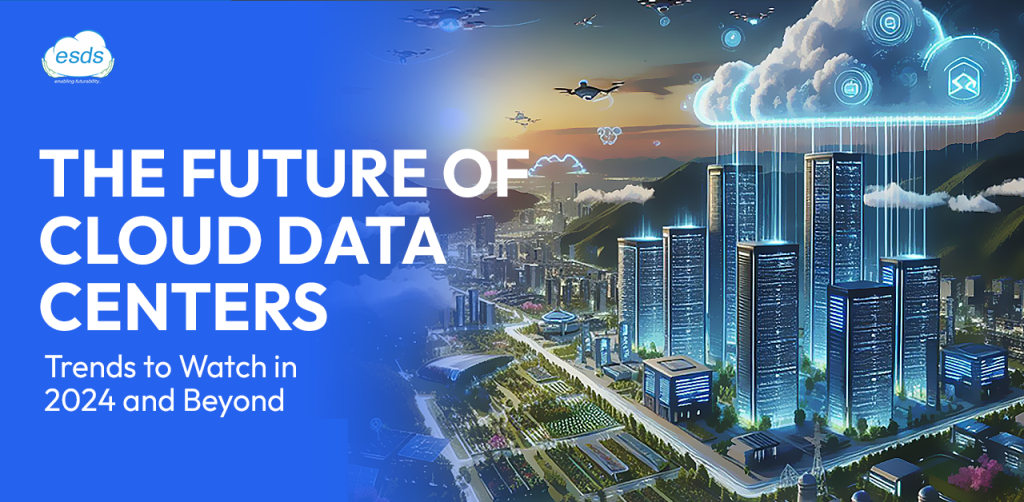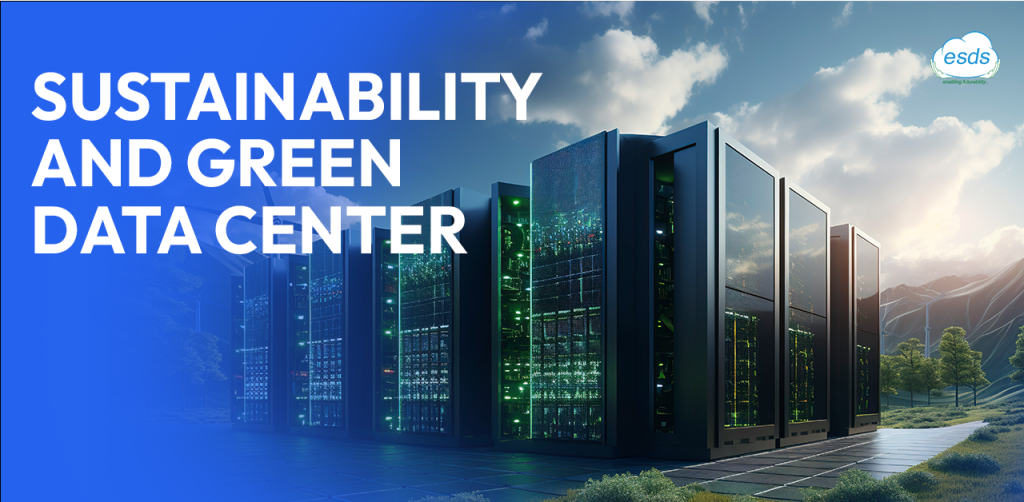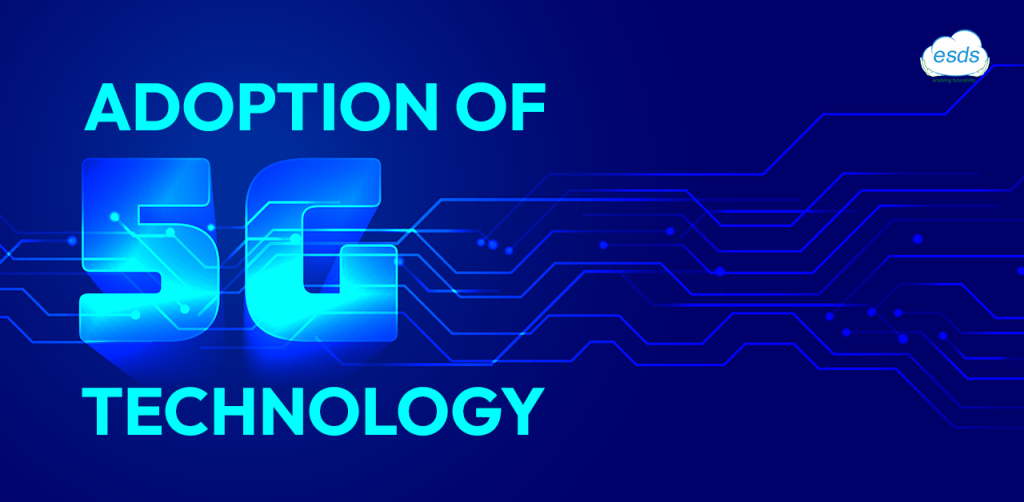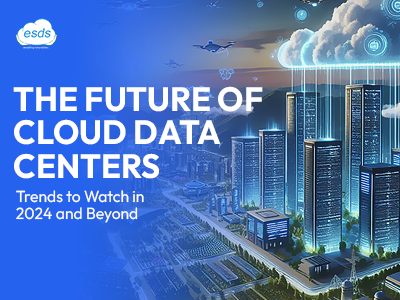The Future of Cloud Data Centers: Trends to Watch in 2024 and Beyond

In 2024, the data center industry is poised to undergo significant transformations driven by technological advancements, these include pressure to achieve sustainability, rising rack densities, coping with demanding AI workloads, the need for more data centers, and the implementation of advanced cooling. A JLL study on the latest data center trends says that 75% of data creation and processing will be outside the range of traditional and cloud data centers by 2025.
Here are the key trends to watch out for:
Hyperscale Data Centers Dominate
The demand for hyperscale data centers is at its peak as enterprises undergo digital transformations. This is evident in the studies done by Mordor Intelligence, estimating a market size of $101.23 billion in 2024.
These are large-scale, high-capacity facilities, increasingly adopted not only by IT giants but by other firms, too, looking toward cloud computing, big data, and IoT applications.
Rise of Artificial Intelligence (AI)
With the increase in AI in data centers, applications in predictive analytics, dynamic workload management, and security. It is expected that AI technologies will achieve better resource management and reduce downtime, minimizing security threats against the centers.
This would mean a demand for data centers that perform high-performance computing, along with enormously scaled-up storage capacity. The estimate by Statista research has suggested that in 2030, AI’s global market size will be $1.8 trillion.
Edge Computing Gains Momentum
In traditional cloud computing, where the data is processed in remote centralized data centers, there has been a radical shift in Edge computing that involves bringing data processing closer to its source. Currently, there is a huge demand for faster data processing and reduced latency that many diverse applications require, such as real-time analytics, video streaming, and autonomous vehicles. This factor gets an additional push with the huge rise in IoT device deployment and proliferation of mobile computing, thereby driving the trend toward edge computing. Thus, this is likely to propel the global edge data center market exponentially in the next few years.
A report from Fortune Business Insights estimates that the edge computing market will reach more than $216 billion by 2032. For reference, considering the growth, the current market value in 2024 is just under $24.48 billion.

Sustainability and Green Data Centers
The central focus at the moment, taken by the data center industry, is sustainability; innovations in energy efficiency, renewable energy sources, and cooling technologies are in the pipeline to cut down its ecological footprint. One of the most highly promising trends under research in this line is the use of solid oxide fuel cells. These advanced fuel cells use a chemical reaction to convert the fuel into electricity without significant pollution, in contrast to traditional methods of combustion. It is also very efficient, being up to 90% efficient in converting potential energy in a single cell for SOFCs.
Solar and wind power are the clean energy sources currently data centers are eyeing to run their operations. Advanced cooling techniques, including liquid cooling and hot/cold aisle containment, are at the trial stage in testing to reduce energy consumption and bring down the carbon footprint.
Decentralisation and Distributed Architecture
Businesses are moving toward a decentralized data center infrastructure because of the need for applications able to provide very low latency and the call for data sovereignty. This speaks about on-premises, edge computing, and regional data processing. This trend empowers enterprises in the control they have over such datasets while ensuring that the processing is done securely and efficiently. This will help increase resilience, scalability, and flexibility to the changing market conditions by providing an ability for enterprises to decentralize their data center infrastructure.
Advanced Cooling Solutions
Efficiency in cooling will become very critical as data centers continue to witness a trend in favour of more power-hungry workloads, especially from AI applications. Climate-conscious cooling technologies and further innovations in liquid cooling are expected to gain greater pervasiveness. Climate change awareness in cooling technologies and more innovations in liquid cooling are foreseen to be more pervasive by 2024. In 2024, expanded immersion cooling adoption and higher usage of direct-to-chip cooling will also be inducted for the efficient running of operations than traditional cooling systems.
Increased Focus on Security
In this digital transformation, cyberattacks are the prime targets in Data centers. There is therefore growing emphasis on implementing granular security measures to mitigate such risks. To respond to such potential threats in real-time, advanced AI and machine learning algorithms are to be deployed. These technologies are ultra-modern and can be used to enhance an organization’s security posture to make sure that data is maintained in terms of confidentiality, integrity, and availability.

Adoption of 5G Technology
With the 5G Technology, the world will greatly rely on the technological revolution, which gives an immense boost to edge computing. In return, this would enable the data centers to support new use cases that were earlier impossible, including bolstered mobile broadband, ultra-reliable low-latency communications, and massive machine-type communications, setting up a highly connected and efficient world.
Data Center as a Service (DCaaS)
At present, with rapid growth in technology, it has been very challenging for businesses to manage resources in the data center environment. In this context, the concept of Data Center as a Service has come up as a remedy for the situation. Businesses can gain an appropriate amount of access to the resources from data centers without big capital investments, wherein flexibility and elasticity are provided through DCaaS. Following the preference for operational expenditure rather than capital expenditure, this model provides the business with the ability to pay for only the resources that it uses when it needs them. DCaaS revolutionizes the way companies manage data centers and supports them in their fight to stay competitive in this dynamic digital world.
AI Democratization through Edge Intelligence
Edge Intelligence, also called Edge AI, is one of the disruptive approaches that is making its way real in the domain of AI computing. This means moving AI computing power from the cloud to edge devices such as smartphones, smart cameras, and IoT devices. This can be quite paramount in making distributed and scalable AI systems, more so in applications that require a huge resource amount. Closer to the edge, Edge AI empowers faster data processing, reduced latency, and increased privacy. Therefore, Edge AI is becoming the core trend in the development of intelligent and autonomous systems.
Looking forward to 2024, ESDS has full-scale preparations to be at the forefront of changing the face of data centers through the fast-paced adoption of new technologies. We are committed to green practices; driven by the powerful vision of sustainability and energy efficiency, distributed and intelligent infrastructure that will scale up to the changing requirements of the digital economy making data centers run efficiently, securely, and reliably to deliver the best services to our customers.
- Government Community Cloud: The Backbone of Modern Public Infrastructure - April 7, 2025
- The Rise of Explainable AI: Building Trust and Transparency - January 24, 2025
- Sustainable Cooling for Data Centers: Innovations Shaping the 2031 Landscape - October 1, 2024
